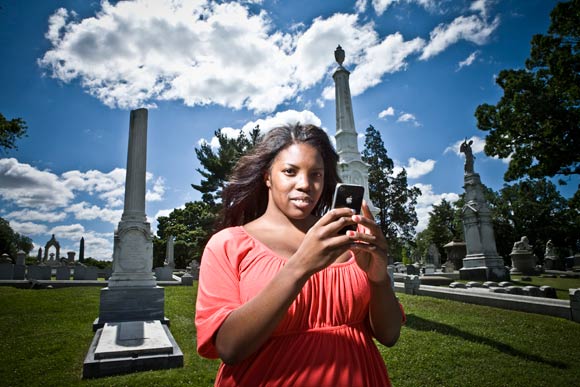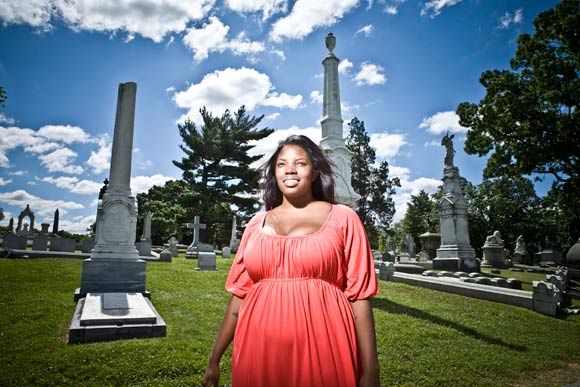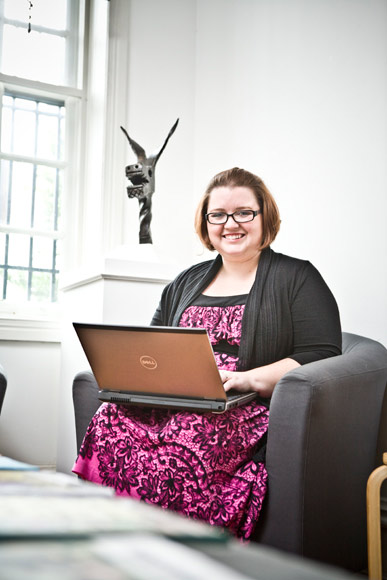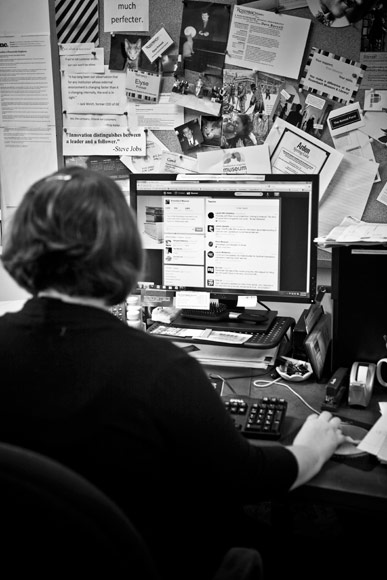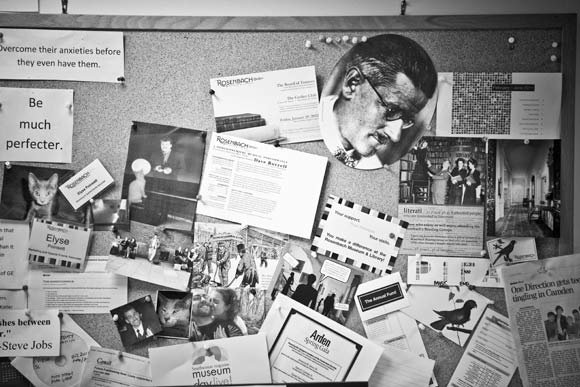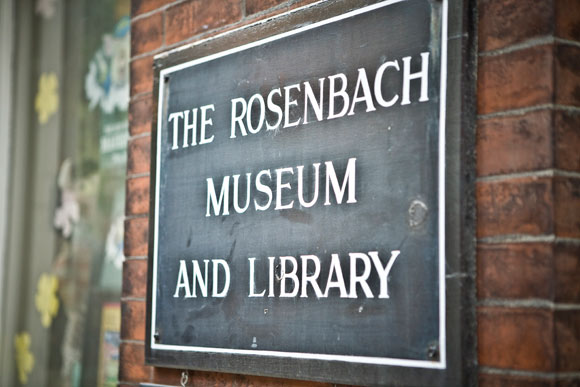Now that social media is a billion dollar industry, there are countless articles boasting: “4 Social Media Practices That Boost Results,” “Five Best Social Media Practices for Small Businesses,” ‘11 Best Practices For Nonprofits Using Social Media,” and “how to achieve automation on Instagram,” the search results go on. Despite how well it’s utilized, what seems striking is how social media usage differs by region or sector. So I set out to ascertain what makes Philly click by specifically looking into the creative ways the arts and culture sector here integrate social media into their work.
Philly, like most metropolitan cities, has had an active social networking scene with numerous personal accounts and more authoritative organizational accounts for multiple years now. Over the past two years, however, Philly has seen more social media innovation due in part to the focus on new media from funders like the Pew Center for Arts and Heritage, PNC Arts Alive and the Knight Arts Challenge. The trend of Philadelphia becoming a tech hub and great place for entrepreneurial start-ups has also affected the arts and culture sector here, increasing competition and availability to new media and ideas.
“Via our social media workshop, groups in Philly improved more than any other city that we have measured, even though they started at roughly the same level as the other cities,” says Ron Evans, Principal of Group Of Minds, an arts technology planning and audience engagement firm in California.
So what makes Philly arts and culture click?
Incorporating Audiences
The operative word in “social media” is social, and it’s hard to be social without friends, which in arts and culture terms translates to audience.
“Our social media content is organic and audience driven,” says Alexis Jeffcoat, Development and Programs Coordinator at Laurel Hill Cemetery.
Laurel Hill Cemetery has an incredibly active Facebook page whose frequent posts containing photos and text are shared, liked, and commented on by multiple viewers. Over the past two years, Laurel Hill Cemetery has had 3,124 photos tagged by both staff and their 1,527 fans, the majority of which are local.
“We might be a cemetery, but our social life isn’t dead,” proclaims Marietta Dooley, whose volunteer efforts at Laurel Hill Cemetery over the past three years have transformed their social media usage.
In a world of shortcuts where it’s too easy to buy a marketing list, incorporating local audiences is ever more important. Many large organizations that flaunt tens of thousands of followers, may actually have acquired lists comprised of non-active social media profiles from cities –or countries-unrelated to their mission.
Matthew Ray, Principal and Partner at ChatterBlast – an online strategy and social media marketing company in Philadelphia- stresses the importance of quality not quantity: “Don’t worry about how many friends you have; make sure they’re active.”
Successful arts and culture organizations will even incorporate their social media audiences into more traditional marketing plans.
“I segment our email lists just like you would a direct mail campaign,” says Elyse Pointsett, Director of Marketing and Special Events at the Rosenbach Museum & Library.
By discerning different lists of audience members, Pointsett can effectively communicate with them via social media and online marketing.
“I send an average of five email blasts for each event,” continues Pointsett.
Philly Makes Art via Social Media
Social media is predominately used as a communication tool, but it can also be a means to create art.
Kendra Lawton, Director of Programs & Planning, and Karim Olaechea, Public Relations Manager, of the Greater Philadelphia Cultural Alliance observe an increase in Philadelphia organizations creating art through social media.
Mural Arts Program and First Person Arts have partnered to create the “Peace is Haiku Song” project with Sonia Sanchez where anyone can share haikus that will be incorporated in murals across city. People can submit their haikus on Twitter or a dedicated webpage.
New Paradise Laboratories currently has two projects online: “Extremely Public Displays of Privacy” and “Fatebook,” both of which transcend cyberspace to involve live performance in what Artistic Director Whit MacLaughlin calls, “social media embedded into theater.”
These original works of theater use social media as part of the stage. During the first four days “Extremely Public Displays of Privacy” was live, 5,000 people saw it online. Social media has influenced how MacLaughlin creates art and subsequently he is changing the manner in which theater is produced.
“Now we have web developers as a part of all production meetings,” says MacLaughlin.
“One of the coolest things in Philadelphia [on social media] is the “Check in to a Masterpiece” on FourSquare as part of the WithArt Campaign,” according to Olaechae of the Cultural Alliance, “We believe this is unprecedented and that this is the first of its kind in the country.”
“Check in to a Masterpiece” allows people to virtually check in at 12 works of art in Philadelphia. The Greater Philadelphia Tourism and Marketing Corporation is even holding a contest for participants who broadcast their check-in via Twitter using the hashtag #WithArtPHL.
Philly Raises Funds and Awareness through Social Media
Crowd-sourcing and micro-giving are huge trends now in the nonprofit sector, and Philadelphia arts and culture organizations are right there benefiting from them.
By motivating their networks to vote for them in funding contests, organizations such as the Community Education Center in West Philly are raising funds. Last year the Community Education Center (CEC) won the Maxwell House Drops of Good Challenge; by receiving the most “likes” of qualified community centers, the CEC won $50,000 to remodel the Center on 3500 Lancaster Ave. Before Flying Kite wrote about them last April, CEC was fifth in the running.
To create the How Philly Moves mural, an extraordinary and vibrant new work of community-based public art by photographer JJ Tiziou on the parking decks facing Interstate 95 at the airport, Tiziou used Kickstarter to raise $26,271 of a $25,000 goal. Most of the money came from donations under $250; smaller donations from more donors built the awareness of the project tremendously. The project has since been recognized as one of the nation’s best public art projects by Americans for the Arts in their 2012 Public Art Network Year in Review.
Utilizing analytics and evaluation techniques puts successful organizations ahead of the rest.
“Facebook Insights allows us to gauge what to post more of,” explains Alexis Jeffcoat about how the Laurel Hill Cemetery Facebook page has acquired so many friends who interact with their posts.
Using Facebook Insights also helps Laurel Hill Cemetery build partnerships: “We can tell people to see how well our Facebook [page] is doing,” says Jeffcoat.
Philly keeps up with trends, research and strategy
“Press releases are now read more off of Twitter than mail or faxes,” explains Matthew Ray, Principal and Partner at ChatterBlast Media, about the importance of keeping up with communication trends.
“The first thing we recommend to organizations it that they develop a strategy before they start anything or at least move in massively [on social media],” explains Ray. “It should be considered as important as their marketing plan.”
The Rosenbach Museum & Library’s social media goal is to be a cultural resource for its followers. Their “feel,” therefore, is interesting and quirky — much like their founders. They tend to use social media for a lot of project-specific goals and so follow a trend of creating avatars for different subjects. “TodayInTheCW” on Twitter and Facebook, for example, is the handle for the Rosenbach’s Civil War blog.
“I find that sub-branding our social media profiles works well, because it’s easier to start fresh than steer the tone,” says Pointsett.
Which social media platforms organizations use are just as important as how they brand their online image.
“What’s the message you’re sending and how are you sending it?” says Ray. “I explain to clients that if you had a TV commercial, you wouldn’t just take that audio and give it to KYW to play on the radio.”
Ray explained that for a university client he would recommend they use Tumblr for admissions because it’s highly an under-18 audience, but uses LinkedIn for alumni and development purposes, as it’s a professional networking site. The goal is to tailor the content to that audience and social media platform. They could even take the help of companies like Social Boost or Social Boost to improve their social media reach as well.
Thanks to workshops provided by the Pew Center of Arts and Heritage, the Greater Philadelphia Culture Alliance and other service organizations, Philadelphia arts and culture organizations have access to cutting-edge research and strategies for social media usage.
You can keep up on social media news by utilizing these resources: Mashable, TechCrunch, Social Media Today, Social Times, Mobile Marketing Watch, All Facebook, About Foursquare, Nonprofit Tech 2.0, TechSoup, and NTEN.
RACHEL DUKEMAN is Managing Director of Plays & Players in Philadelpiha and is a cultural marketer and planner throughout the region. Send feedback here.
All Photographs by MICHAEL PERSICO
